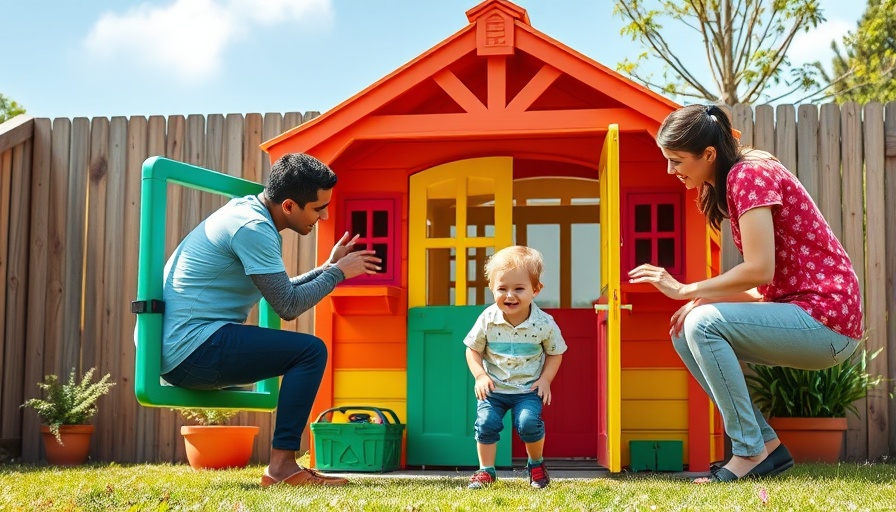
Transforming Spaces: Creating Magical Playgrounds for Kids
In the heart of suburban neighborhoods, families dream of the perfect backyard that offers not only beauty but a lot of fun for their children. The touching story of Zach and his mother Amarie, recently featured in an insightful DIY renovation video, gives us inspiration. This journey began with a cubby house that needed a facelift after the loss of Zach's father, highlighting the resilience of children and the importance of creating safe, joyful spaces for them.
In '8 Adorable DIY Ideas For Your Kids', we explore the transformation of a simple backyard cubby house into a vibrant summer playground, revealing key insights that inspired this deeper analysis.
Why Outdoor Play Matters for Kids
Research emphasizes the value of outdoor play in childhood development. It fosters imagination, physical wellness, and social skills. Zach’s newly renovated backyard will not just be a play-space but also a nurturing environment that encourages creative play, which is a crucial aspect of childhood. DIY projects like those shown in the video not only engage kids but also help them develop important skills and make cherished memories.
Steps to Revamp Your Child's Play Area
Transforming a simple backyard into a captivating playground can be a fulfilling project. Here’s how you can create a magical outdoor playground for your kids:
- Assess the Space: Begin by analyzing your backyard. Identify areas that receive ample sunlight and shielded spots that might be ideal for certain activities.
- Use Safe Materials: When creating play structures, consider materials that are child-friendly and durable. The installation of rubber surfaces, as shown in Zach's project, provides a soft landing area, promoting safety while they play.
- Incorporate Functional Elements: Consider adding features like water slides, balance beams, or gardening spots to encourage both physical activity and creativity. In Zach's case, a balance beam made from rustic wood pieces leads to engaging challenges.
- Bring Color and Charm: Use bright colors for play areas to stimulate children's imagination. One can paint cubby houses in vibrant hues or add fun nautical elements to engage young adventurers just like Zach’s exciting pirate ship theme.
- Enhance Nature Interaction: It's also important to plant kid-friendly gardens. Vegetables and herbs attract children while teaching them about nature's bounty. Marigolds and sunflowers can bring brightness and draw pollinators, enhancing this lively play space.
Incorporating Edible Gardens for Kids
Planting a vegetable garden is not just a sustainable practice; it’s an educational activity that can transform the way children relate to food. By encouraging kids to get hands-on with gardening, you instill the values of responsibility and healthy eating. In Zach’s project, the introduction of raised garden beds can offer fresh herbs and harvestable produce while enhancing outdoor fun.
Consideration of Maintenance: A Practical Approach
To maintain the charm of your backyard paradise, a strategic lawn care schedule should be developed. From mulching to ensure the soil's health to pruning trees for safety, mastering these gardening skills is vital. Using sustainable practices such as organic gardening not only improves soil health but makes yard care enjoyable rather than a chore.
Colorful DIY Ideas: The Sky’s the Limit!
Creating engaging DIY projects can be an exciting way to spend time gathering with family. Simple projects, like building a water slide from a plastic tarp, or turning an old cabinet into a toy kitchen, provide endless play opportunities. Each new project brings creativity alive, reminding everyone to inject fun into household chores.
Transforming Grief into Joy Through Play
Finally, creating a delightful play area for Zach not only honors the memory of his father but shows that love continues through the memories we create with our children. As Zach experiences joy in his backyard, it reflects the resilience of the human spirit—a testament to their journey—a place filled with laughter, sunsets, and inventive play!
As you consider your own backyard renovations, think about adding elements that resonate joy and invite play. What story will your garden tell?
 Add Row
Add Row  Add
Add 




Write A Comment